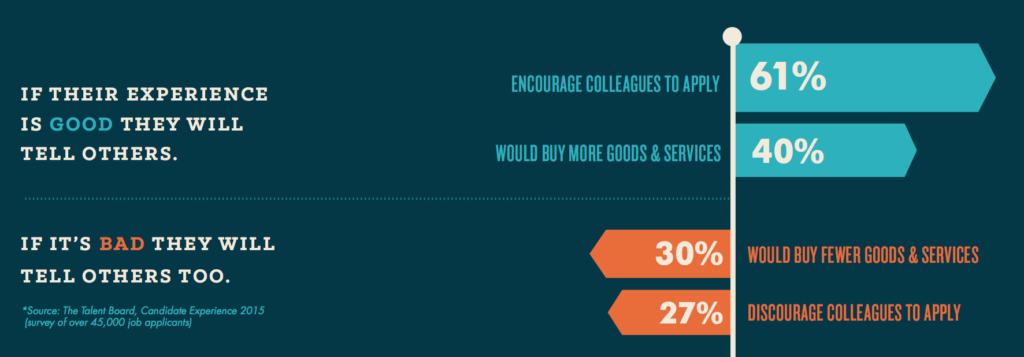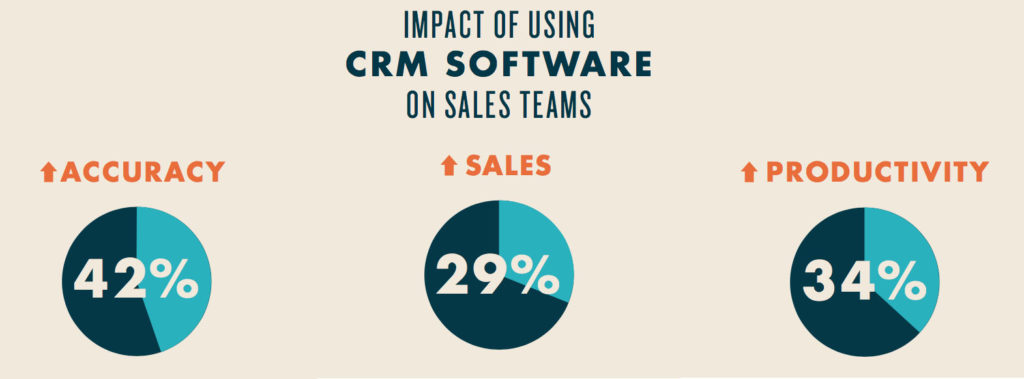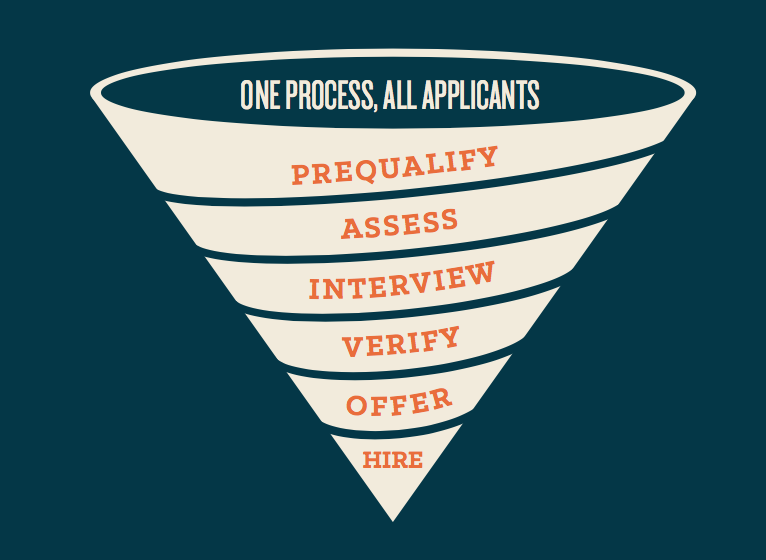Hiring a superstar to join your team could be your company’s most important sale. Revenue is critical, but your people will make or break your company. Superstar hires can multiply your sales—even if they are not in a sales position. Poor hires will do the exact opposite while driving your superstars away.
Think about the best employee you have ever had. Consider the impact this person made. You are probably smiling right now just thinking about it. What would you be willing to do to get another person like that? I’m sure that you would do just about anything to attract that kind of talent.
Now think about the worst one. Ouch. I just did the same thing. Smile: gone. What would you be willing to do to avoid repeating that pain?
So why do most companies fail to recruit the way they sell? The best practices that have made them successful in sales are nowhere to be seen in their recruiting process.
- No clear value proposition?
- Making it hard for prospects to get started?
- Not following up?
A great sales leader would never let this fly. Processes would be built. New standards and goals would be introduced. People would be held accountable to results. And the results would be there.
Follow these steps to act more like a sales leader, and you will be on your way to recruiting superstars. I’ll walk you through the key lessons I have learned by studying and working with some of the top sales leaders in their fields. And somehow I will manage to make two different references to french fries in the process!
#1 START WITH A COMPELLING OFFER & PRESENTATION
Your sales leader would not expect to close many deals unless every member of their team knew the value proposition and had a compelling way to present it to their prospects. Recruiting is no different. Candidates are your buyers. If they are not interested in what you are selling (or they don’t even know what you are selling), then they will not buy.
What You Should Do:
Make sure that your careers page has information about your company and why people love working there. Authentic photos, videos, and testimonials will make the site more compelling. Make sure that some of this information appears directly on your job posting pages since many prospects will be coming directly to those pages from outside job boards.
Write job descriptions to attract the right type of people. Don’t focus only on what you need for the role—think about why the right type of candidate would love this position. Not sure? Speak with your current superstars to get their input.
Get the jobs in the right places. Think about where your prospects are and find ways to reach them. This should happen through multiple channels including your employees and network, your customers, and external job boards.
Make it easy to apply from any device. Do you think a sales leader would ever make a prospect complete a long registration form as a first step? Never. They want to capture the lead! If your application is long or not mobile optimized, then you are losing prospects. Start with a short application to capture as many qualified applicants as possible, and follow up with additional forms as a second step if needed.
#2 PREQUALIFY YOUR PROSPECTS
Your sales leader would never want the team to waste time on unqualified prospects. That is why their sales lead capture form has a couple of questions to prequalify prospects. If they don’t get leads from their website, they ask questions upfront to determine if they’re a good match. Think about how much time you and your team could save if you took the same approach. It’s easy to become paralyzed and not know where to start if you receive hundreds of applicants for a position. Your sales leader would tell you to create a system to score your prospects and focus on the best prospects first.
What You Should Do:
Think about the most important criteria for the position and develop prescreen questions for them. Think about the first few things you would want to know about this person. These could be items found on their resume (such as experience), but also things that you normally may not learn until the interview (such as availability).
Add these questions to your application. It’s important to not have too many items on the initial application or you’ll see a drop-off in application submissions. We recommend 3-5 questions.
Develop a scoring system for applicants based on their responses. This will allow you to identify top prospects and disqualify certain applicants. In order to automate this scoring, you must use questions with a fixed set of answer options so that you can assign a score value to each one. It’s okay to have open response questions in addition to picklist-type questions but try to limit those to 1-2 questions.
#3 FOLLOW UP QUICKLY AND REGULARLY
Sales leads are like french fries: they are at their best when they are fresh and hot. I know that your sales leader would go nuts if great leads were just sitting there getting cold and stale. The same thing goes for candidates after they apply. They are excited about your opportunity and ready to talk. But if you wait too long, they are going to pursue other options. And just like sales prospects, great candidates always have other options.
How quick is quickly? I know sales leaders who have escalation alerts sent out if leads are not contacted within five minutes. That may be extreme for recruiting, but I know HR leaders who tell me that prospects for certain positions will be gone and off the market if they cannot reach them in 48 hours. Last thing – every prospect deserves follow up and so does every applicant. Remember that your applicants could also be your customers. This may give you new perspective on how to treat them.

What You Should Do:
Have a system to identify top prospects and follow up with them quickly. Set clear standards with your team on what this means.
Be persistent. Don’t stop at just one email if you don’t hear back from a qualified applicant. Your sales leader would never go for this! Find a way to stand out and don’t rely solely on email. “Pick up the phone!” (that last part is your sales leader talking to you).
Build a process to follow up with unqualified applicants with a polite and encouraging rejection email. Hiring teams take a risk by often overlooking this step as it can influence how candidates think of your company as customers.
#4 DEFINE THE PROCESS & USE A SINGLE SYSTEM TO EXECUTE IT
Effective sales leaders are process-driven and provide their teams with a playbook to win. Sales teams that execute on the right playbook are rewarded with increased efficiency, improved predictability, and more sales! How do sales leaders ensure that everyone is following their playbook? They use a Customer Relationship Management (or CRM) system such as Salesforce. Sales leaders can build their process within the CRM and have their teams run all of their deals through the system.
The impact of CRMs has been game-changing for sales teams. The great news is that the same opportunities exist for hiring teams. Once you develop a playbook to win, you can execute it through an Applicant Tracking System (or ATS). An ATS is a CRM for hiring teams; a single system to manage all applicants. Using an ATS can improve the quality and speed of hires, all while saving time for you and your team.

What You Should Do:
Think about your hiring process and the steps you want included. These steps may differ for certain positions, but they should be as consistent as possible. If you are looking for best practices, speak with leaders within your industry as well as some from other industries (some of our best recruiting process ideas came from companies with completely different businesses).
Build a playbook to win and get buy-in from everyone on your team to follow it. An effective sales leader would not allow team members to run their own home-brewed sales processes, and you shouldn’t accept that from your hiring team either. When teams work together with a single playbook, they are more likely to win together.
Incorporate the playbook and process steps into an Applicant Tracking System. Sales leaders know that a paper-based playbook in a binder will not get used. You need to build the process into a system that requires team members to follow the steps otherwise they won’t do it consistently.
#5 TRACK RESULTS & HOLD YOUR TEAM ACCOUNTABLE
Sales leaders always know the score and how they are performing vs the goal. Do you know your score (or even your measurable goal) when it comes to hiring? Your sales leader would tell you to start measuring performance and then create goals and standards to achieve them. Their foundation for performance measurement is the sales funnel.
At the top of the funnel sales leaders analyze their lead flow (quantity, quality, source). Then they look at the key stages of the sales process to see what percentage of leads make it to each stage of the funnel (and how quickly they make it there) – all the way down to closed-won deals.
The same funnel concept applies to recruiting except leads are applicants and closed-won deals are hires. Break down the process and results into smaller stages (such as from application to interview, interview to offer, or offer to hire) and focus on improving the results one section at a time.

What You Should Do:
Establish your hiring funnel and the key measurement stages. This may be as simple as Applicants > Interview > Offer > Hire. Find a system to track these consistently across your company.
Analyze your hiring funnel to establish a baseline for performance. Calculate conversion rates (such as percentage of applicants interviewed) and velocity rates (such as time to hire/fill). Look for opportunities to improve and set performance standards for your team. This could include increasing the percentage of applicants who make it to the interview stage by following up faster and using a less strict standard for the initial qualification.
Once you get your hiring funnel optimized, then you can increase your results by increasing your lead/applicant quality and quantity. You should analyze your applicant sources and identify which ones have produced the most (and the best) hires for you. You may decide to spend more time with certain sources to improve your results, or to focus on increasing the number of employee referrals you receive. Use the data to guide your actions.
Make sure that your team knows the score. If you have multiple recruiters/managers hiring for the same types of positions, show them how each one is performing vs the average (and the best). If someone is struggling dig into their hiring funnel to investigate. This is how high-performing sales leaders coach their teams.
WHERE TO START
Approach your hiring process with a beginner’s mind and seek to learn as much as possible from others. Taking yourself out of the process and looking at it from an outsider’s perspective will put you in the best position to see opportunities to improve your results.
Act like a Sales Leader and ask yourself these questions:
- Would I want to buy what we are selling for a career opportunity? What is our value proposition to our prospects?
- How could we increase the number of leads (applicants) we receive?
- How could we convert more leads into opportunities (interviews) and closed-won deals (hires)?
- How can we get the right prospects to become even more excited as they move through the process?
- How could we tighten up our process to produce more predictable results?
- How can I put myself in the best position to keep score and hold my team accountable to results?
